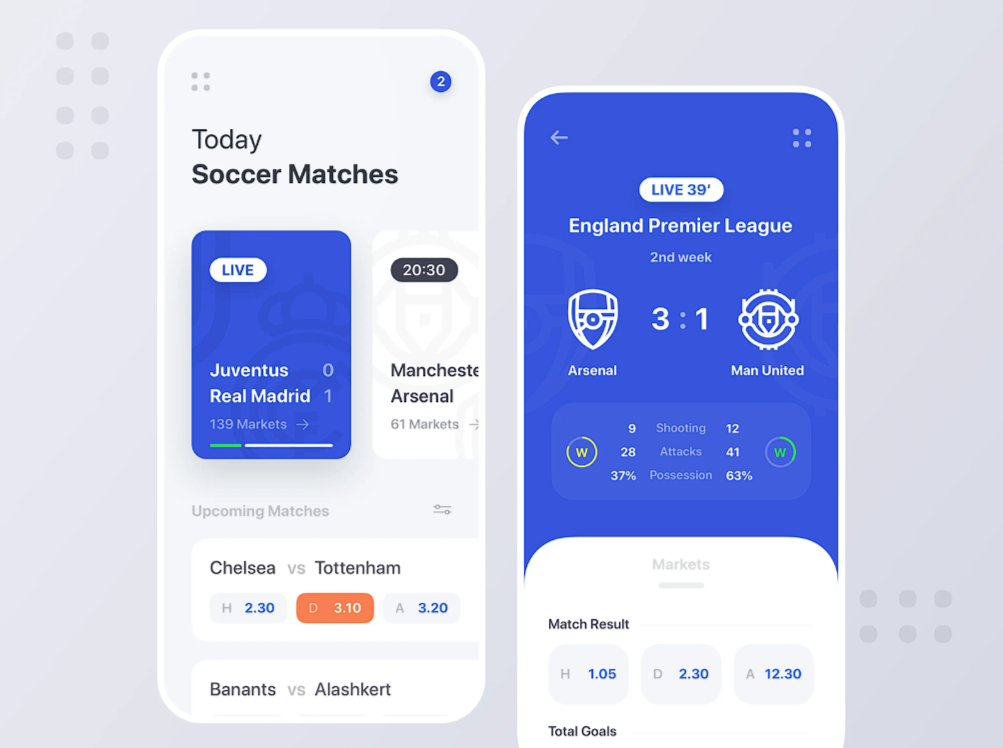In an increasingly digital world, user experience (UX) design has become a crucial aspect of application development, particularly in the competitive landscape of mobile betting apps. Understanding the principles of UX design can significantly enhance a bettor’s experience, making it easier and more enjoyable to place wagers. This article delves into the key elements of user experience design in betting apps, highlighting best practices, challenges, and the future of UX in this industry.
Understanding User Experience (UX) Design
User experience design refers to the process of enhancing user satisfaction by improving the usability and accessibility of a product. In the context of betting apps, UX design focuses on creating an intuitive interface that allows bettors to navigate easily, find information quickly, and place bets without unnecessary complications.
Key Objectives of UX Design
- Ease of Use: Ensure that users can navigate the app seamlessly.
- Accessibility: Design for all users, including those with disabilities.
- Satisfaction: Enhance the overall experience leading to higher user retention.
Key Elements of UX Design in Betting Apps
1. Intuitive Navigation
An essential component of any betting app is its navigation system. Users should be able to find their way around the app with minimal effort.
- Clear Menus: Menus should be logically organized, with categories that make sense (e.g., sports, live betting, promotions).
- Search Functionality: A robust search feature allows users to quickly locate specific events or markets.
2. Visual Design
The visual aspect of an app plays a significant role in user engagement.
- Color Scheme: The use of visually appealing colors can enhance the user experience. Colors should be consistent with the brand and not overly flashy.
- Typography: Clear and legible fonts can improve readability, making it easier for users to consume information quickly.
3. Responsiveness
A betting app must perform well across various devices and screen sizes.
- Adaptive Design: The layout should adjust seamlessly when switching between smartphones and tablets.
- Load Times: Fast loading times are critical. Users will quickly abandon apps that lag or take too long to display content.
4. User Feedback and Support
Incorporating user feedback is vital for continuous improvement.
- Surveys and Ratings: Regularly solicit feedback through in-app surveys or ratings to gauge user satisfaction.
- Accessible Support: Easy access to customer support, such as live chat, helps resolve user issues promptly.

Enhancing the Betting Experience Through UX Design
1. Personalized Experience
A personalized experience can significantly enhance user engagement.
- Tailored Promotions: Offer personalized promotions based on user behavior and preferences.
- Favorite Sports and Teams: Allow users to select their preferred sports or teams, providing quick access to relevant betting markets.
2. Simplified Betting Process
A simplified betting process reduces friction and enhances satisfaction.
- One-Click Betting: Implement one-click betting options for quicker wagers.
- Quick Deposit and Withdrawal Options: Streamlining payment processes can improve user retention.
3. Gamification
Adding gamification elements can make betting more engaging.
- Loyalty Programs: Incorporate reward systems that incentivize continued use, such as points for bets placed or achievements earned.
- Leaderboards: Create competitive elements where users can see how they rank against others in the community.
Challenges in UX Design for Betting Apps
Despite the importance of UX design, several challenges can arise in the development of betting apps:
1. Regulatory Compliance
Betting apps must adhere to strict regulations that can complicate design and functionality.
- Age Verification: Implementing age checks can disrupt user flow but is crucial for legality.
- Responsible Gambling Features: Design must include features that promote responsible gambling practices.
2. Diverse User Base
Understanding a diverse range of users can complicate UX design.
- Different Skill Levels: Cater to both experienced and novice bettors, ensuring that advanced features do not overwhelm inexperienced users.
- Cultural Considerations: Design should accommodate users from various backgrounds, taking into account local preferences and behaviors.
3. Keeping Up with Trends
The betting landscape is continuously evolving, necessitating ongoing adaptation of UX design.
- Emerging Technologies: Stay updated on trends such as virtual reality (VR) and artificial intelligence (AI) that can enhance user experience.
- Competitor Analysis: Regularly analyze competitors to ensure that your app remains relevant and competitive.
Conclusion
User experience design is a fundamental aspect of betting apps, significantly impacting how bettors engage with the platform. By focusing on intuitive navigation, responsive design, and personalized experiences, developers can create apps that attract and retain users. As the online betting landscape evolves, embracing new trends and addressing challenges will be critical for future success. Prioritizing UX in betting apps not only enhances user satisfaction but also fosters a loyal customer base, ultimately contributing to the app’s success in the competitive betting market.
